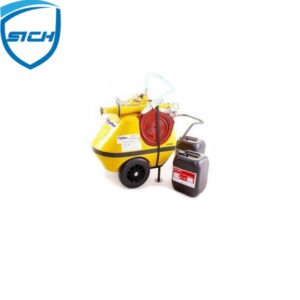Foam chambers are an important component of fire suppression systems and must meet a range of safety and performance standards to ensure their effectiveness and reliability.
Here are some of the key standards that foam chambers must meet:
UL 162: This standard, published by Underwriters Laboratories, outlines the requirements for foam liquid concentrates used in foam extinguishing systems. The standard covers various aspects of foam concentrates, including extinguishing performance, compatibility, and corrosion resistance.
FM Global: FM Global is a global industrial and commercial property insurer that provides certification for fire protection equipment, including foam chambers. FM Global certification requires that the foam chamber meets specific performance criteria related to extinguishing effectiveness, flow rate, and durability.
NFPA 11: This standard, published by the National Fire Protection Association, provides guidelines for the design, installation, and maintenance of foam extinguishing systems. The standard covers various aspects of foam systems, including foam concentrate, proportioning equipment, and discharge devices.
EN 13565-2: This European standard provides guidelines for the design and installation of foam extinguishing systems. The standard covers various aspects of foam systems, including foam concentrate, proportioning equipment, and discharge devices.
IMO Resolution A. 800: This International Maritime Organization resolution provides guidelines for the design and installation of fire protection systems on ships, including foam extinguishing systems. The resolution outlines the requirements for foam concentrates, proportioning equipment, and discharge devices.
Overall, foam chambers must meet a range of safety and performance standards to ensure that they are effective and reliable in suppressing fires. When selecting a foam chamber, it’s important to choose a product that has been certified by recognized industry organizations and meets the necessary safety and performance standards for your specific application.
What are the most important factors to consider when selecting a foam chamber?
When selecting a foam chamber for a fire suppression system, there are several important factors to consider to ensure that the foam chamber is effective and reliable.
Here are some of the key factors to consider:
Application: Consider the specific application of the foam chamber, including the type of fire hazard, the size of the protected area, wholesale foam chamber manufacturer and the type of foam required. Foam chambers can be designed for different applications, such as industrial facilities, aircraft hangars, or storage tanks.
Flow rate: The flow rate of the foam chamber should be sufficient to provide effective fire suppression. Consider the required flow rate based on the size of the protected area and the type of foam required. The flow rate should also be compatible with the water supply available.
Foam concentrate: The foam concentrate used in the foam chamber should be suitable for the specific fire hazard being protected. Consider the type of foam concentrate required based on the type of fuel involved in the fire, such as Class A, B, or D foam.
Material: The material of the foam chamber should be compatible with the foam concentrate being used and the environment in which it will be installed. Common materials used for foam chambers include brass, stainless steel, and PVC.
Certification: Look for a foam chamber that has been certified by recognized industry organizations, such as FM Global or UL. Certification ensures that the foam chamber meets specific safety and performance standards.
Maintenance: Consider the maintenance requirements of the foam chamber, including inspection, testing, and cleaning. Choose a foam chamber that is easy to maintain and has readily available replacement parts.
Overall, selecting a foam chamber requires careful consideration of several factors to ensure that it is effective and reliable in suppressing fires. It’s important to choose a foam chamber that is designed for the specific application, has a sufficient flow rate, uses the appropriate foam concentrate, is made from compatible materials, has the necessary certifications, and is easy to maintain.
